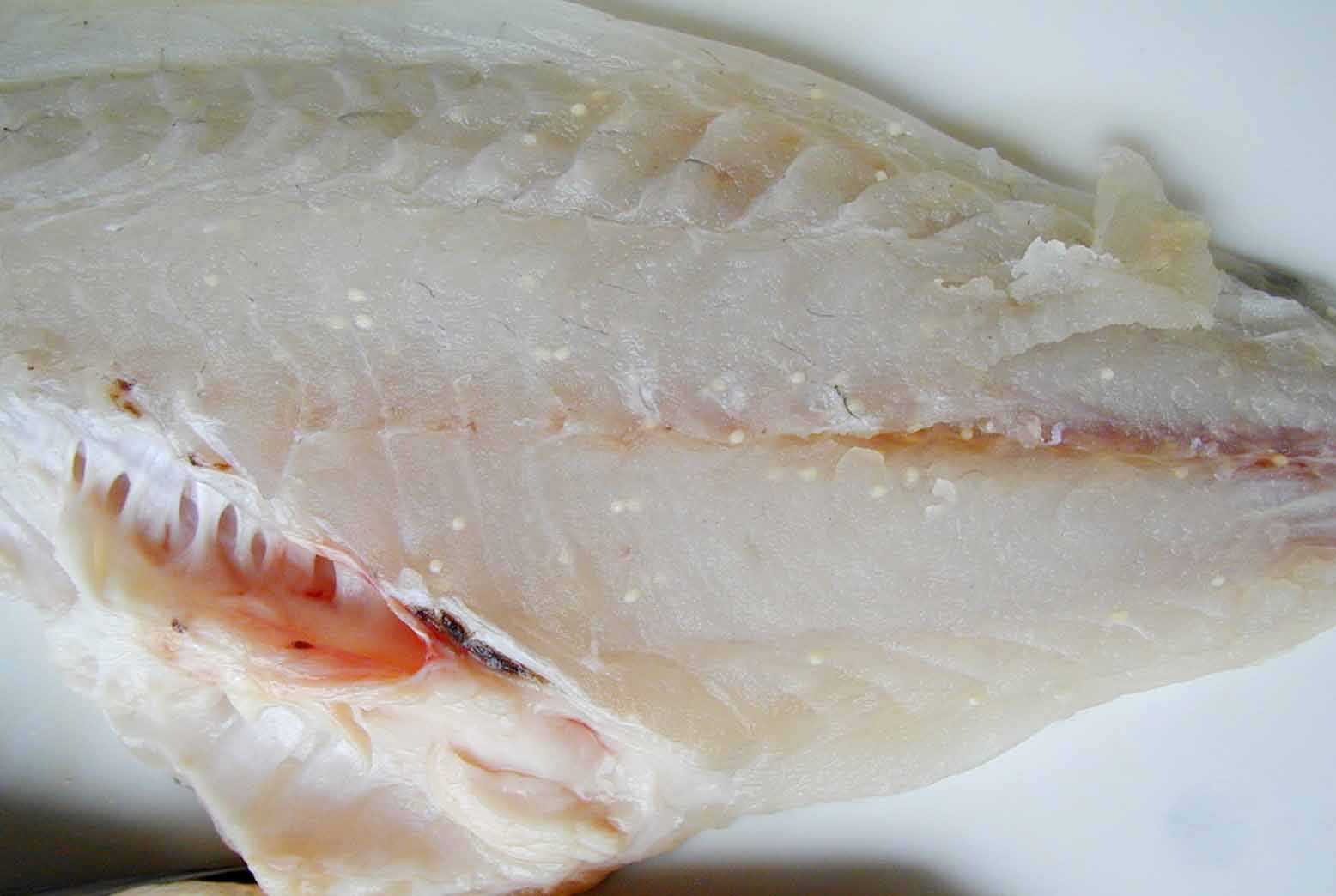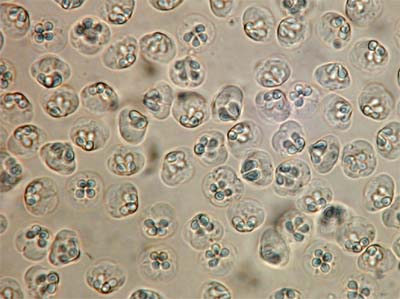
| Parasite | Kudoa iwatai |
|---|---|
| Taxonomy | Myxozoa, Myxosporea, Multivalvulida |
| Hosts | Red sea bream (Pagrus major), spotted knifejaw (Oplegnathus punctatus), black porgy (Acanthopagrus schlegelii), yellowtail (Seriola quinqueradiata), giltheadseabream (Sparus aurata), European sea bass (Dicentrarchus labrax), flatheadmullet (Mugil cephalus) and 10 species of wild fish including spangled emperor (Lethrinus nebulosus) from Red Sea. |
| Infection site | In general, trunk muscle. Infection in brain, eye, intestine and ovary were also reported in fishes from Red Sea (Diamant et al., 2005). |
| Clinical signs | Spherical white cysts (one-several mm) are formed (Fig. 1). Infection is not fatal to host fish. |
| Parasitology | Many spores are produced inside the cysts (Fig. 2).The spore (length 6.7-8.7 μm; width 9.7-10.7 μm) is garlic-shape at lateral view and has 4 polar capsules (length 3.8-4.5 μm). The life cycle is unknown. |
| Pathology | The parasite is encapsulated by fibrous connective tissue, resulting in visible cyst formation. Liquefaction of muscle tissue does not occur. |
| Health hazard | Since this parasite is not infectious to human, it is harmless in food hygiene. |
| Diagnosis | Check the spores by wet-mount of cysts. Kudoa iwatai can be distinguished from Kudoa amamiensis by the spore size and shape (Egusa, 1986). Sample should be smeared and stained by Giemsa or Diff-Quik. |
| Other information | When this parasite was initially found from cultured spotted knifejaw at Miyazaki prefecture and red sea bream at Kagoshima prefecture in 1982, it was assumed that Kudoa amamiensis spread from Amami or Okinawa to the mainland of Japan. However, the morphological observations revealed that this parasite was not identical toK. amamiensis (Egusa and Shiomitsu, 1983). The number of cysts of K. iwatai per one fish is not as much as that of K. amamiensis (Sugiyama et al., 1999) There are no effective methods to prevent this disease. |
| References | Diamant, A., M. Ucko, I. Paperna, A. Colorni and
A. Lipshitz (2005): Kudoa iwatai (Myxosporea: Multivalvulida) in wild and cultured fish in the Red Sea:
Redescription and molecular phylogeny. J. Parasitol., 91,
1175-1189. Egusa, S. (1986): The order Multivalvulida Shulman, 1959 (Myxozoa; Myxosporea): a review. Fish Pathol., 21, 261-274. (In Japanese) Egusa, S. and T. Shiomitsu (1983): Two new species of the genus Kudoa (Myxosporea: Multivavulida) from marine cultured fishes in Japan. Fish Pathol., 18, 163-171. (In Japanese) Sugiyama, A., H. Yokoyama and K. Ogawa (1999): Epizootiological investigationon kudoosis amami caused by Kudoa amamiensis (Multivalvulida:Myxozoa) in Okinawa Prefecture, Japan. Fish Pathol., 34, 39-43. (In Japanese) |

Fig. 2. Fresh spores of K. iwatai.
(Photos by K. Mizuno)

Fig. 1. A fillet of red sea bream infected with K. iwatai.